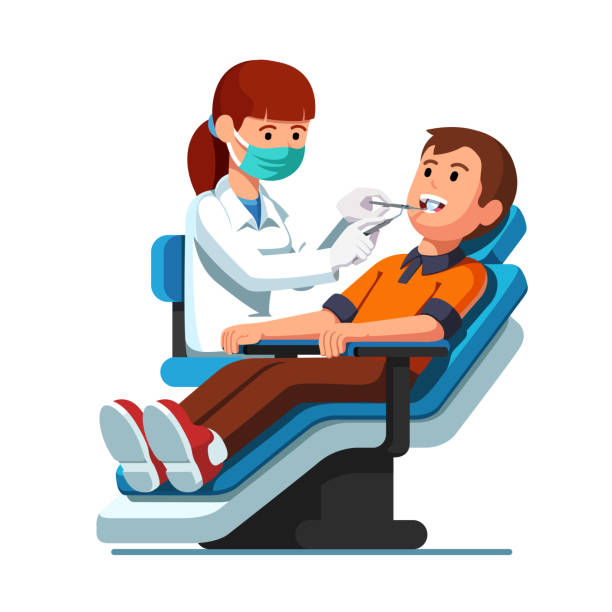Find the Best Dentist in Eugene Oregon for Your Family's Dental Needs
Find the Best Dentist in Eugene Oregon for Your Family's Dental Needs
Blog Article
Discover Common Dental Problems That Dentists Can Deal With Efficiently
Oral health is a critical facet of total well-being, yet typical issues such as cavities, gum tissue illness, tooth degeneration, tooth level of sensitivity, and misaligned teeth frequently go unattended. Each of these conditions can considerably affect not only oral health but additionally daily convenience and confidence. Advancements in oral care have made it possible for dentists to attend to these problems successfully via various therapies. From regular cleanings and fillings to orthodontic treatments, the remedies offered today are both comprehensive and accessible. What are the certain treatments offered, and how can they recover ideal dental wellness?
Cavities
They occur when the enamel, the difficult outer surface of the teeth, is deteriorated by acids created by germs in the mouth. These germs prosper on sugars and starches from food and drinks, producing a sticky film called plaque that sticks to the teeth.

Precautionary steps are crucial in combating cavities. These consist of keeping good dental health methods such as regular cleaning with fluoride tooth paste, flossing, reducing sugar consumption, and participating in routine dental sees. By adhering to these practices, people can significantly reduce their risk of developing tooth cavities and keep optimum oral health.
Gum Tissue Disease
Periodontal condition, likewise referred to as gum disease, is a prevalent condition that influences the tissues surrounding and supporting the teeth. It mainly happens as a result of the build-up of plaque, a sticky movie of germs that bases on the teeth. If not removed through regular brushing and flossing, plaque can harden right into tartar, which can just be gotten rid of by a dental specialist.
There are 2 major phases of gum tissue condition: gingivitis and periodontitis. Gingivitis is the initial, milder kind, identified by red, inflamed gums that might hemorrhage conveniently. At this stage, the problem is generally relatively easy to fix with proper oral health and expert oral cleansings. If left untreated, gingivitis can advance to periodontitis, a more severe type that can cause loss of the bone that supports the teeth.
Periodontitis includes deeper infection and inflammation of the gums, causing the gums to retreat from the teeth and develop pockets that can become infected. Treatment for periodontitis frequently involves scaling and root planing, a deep-cleaning procedure to eliminate tartar and bacteria from beneath the gum tissues. In advanced cases, surgical treatments might be needed to restore gum tissue and bone health. Normal oral exams are necessary for very early detection and effective monitoring of periodontal condition.
Dental Cavity
Dental cavity, a prevalent dental concern, manifests when the tough surface area of the tooth, known as enamel, is damaged by acids produced by germs in plaque. This procedure begins when sugary and starchy foods are consumed, offering a breeding ground for germs. These microorganisms metabolize the sugars to generate acids, which ultimately deteriorate the enamel, causing dental caries.
Originally, dental cavity might be asymptomatic, however as it advances, it can result in visible holes or pits in the teeth, toothache, and level of sensitivity to warm, cool, or sweet compounds (eugene dentist). If left neglected, the decay can penetrate much deeper layers of the tooth, getting to the dentin and eventually the pulp, triggering serious pain and potentially leading to abscesses or infections
Early intervention is essential for optimum results, making regular oral check-ups essential for recognizing and resolving imbalance concerns promptly. With individualized therapy plans, dental professionals can successfully bring back both the capability and appearance of a client's smile.
Verdict
In summary, dealing with typical dental troubles such as tooth cavities, gum condition, dental cavity, tooth sensitivity, and misaligned teeth is essential for preserving oral health and wellness and capability. Dentists are outfitted to identify and deal with these problems effectively via various treatments, including dental fillings, cleanings, orthodontics, and preventative treatment. Prompt and ideal treatment can minimize the dangers connected article with these oral troubles, consequently improving general oral health and lifestyle.
Oral health is a vital element of general well-being, yet typical issues such as cavities, gum tissue illness, tooth decay, tooth sensitivity, and misaligned teeth often go unattended.Tooth degeneration, a common dental concern, manifests when the hard surface of the tooth, recognized as enamel, is harmed by acids created by microorganisms in plaque. Preventive procedures such as go right here normal oral check-ups, great dental health methods, and a balanced diet are essential in alleviating the threat of tooth degeneration.
Typical factors consist of enamel erosion due to hostile brushing, acidic food intake, or dental problems such as periodontal recession and tooth degeneration.In summary, resolving usual dental problems such as cavities, gum tissue disease, tooth degeneration, tooth sensitivity, and misaligned teeth is critical for preserving dental health and capability.
Report this page